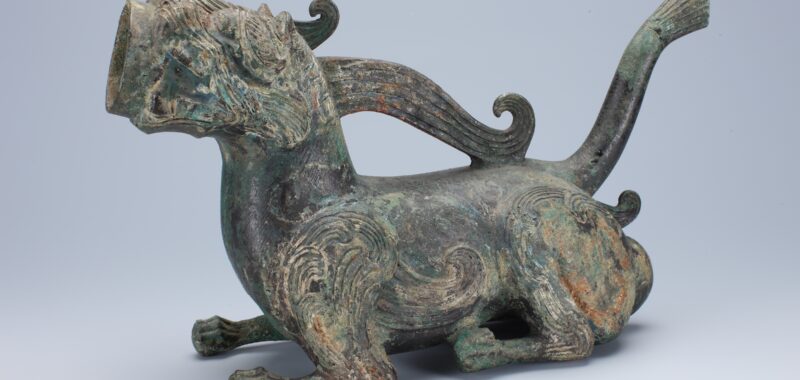Treasures from nearly 70 years of archeological excavations in China are revealed in a landmark exhibition at China Institute Gallery in New York City. Gold from Dragon City: Masterpieces of Three Yan from Liaoning, 337–436 presents artworks and cultural objects on view for the first time in the United States from September 5, 2024, through January 5, 2025. The exhibition features sculptures, bronze mirrors, inkstones, imperial seals, equestrian objects, and ceramic vessels, as well as jewelry and ornaments, many made of gold. The unearthed archeological discoveries are from “Dragon City,” now present-day Chaoyang in Liaoning Province. A fully illustrated catalogue will accompany the exhibition.
Gold from Dragon City illustrates the remarkable history of ethnic integration and cultural exchange along the Silk Road that transformed northern China more than 1,600 years ago. The archaeological objects in the exhibition have provided revelations surrounding how the Three Yan culture, established by the Murong Xianbei people, progressed from a nomadic to an advanced agricultural society. In the process, they were influenced by the Eastern Jin dynasty and gained literacy, and the objects they created had a profound impact on later developments in gold craftsmanship and cavalry.


The exhibition is jointly organized by China Institute Gallery and the Liaoning Provincial Museum. Willow Weilan Hai, Senior Vice President of China Institute in America and Director and Chief Curator of China Institute Gallery, directed and executed the exhibition. It was curated by Dr. Liu Ning, Deputy Director of Liaoning Provincial Museum, with assistance from the Liaoning Provincial Institute of Cultural Relics and Archaeology and the Chaoyang County Museum.
“This extraordinary exhibition illustrates the remarkable achievements of the Three Yan civilization, which is now no longer lost to history. We have gained a deeper understanding of how ethnic integration and the cultural exchange of East and West inspired and enriched cultures along the Silk Road,” said Willow Weilan Hai. “Just as in today’s world, cultural exchange serves as the most important bridge to promoting mutual understanding and progress. Over my three decades of organizing exhibitions at China Institute Gallery, I have sought to present an exhibition that illustrates this crucial theme and am so pleased to present it now.”

About China Institute Gallery
China Institute Gallery is renowned for its intimate, first-class thematic exhibitions, which are accompanied by in-depth scholarly catalogues. Since 1966, the gallery has presented more than 100 exhibitions across all art forms including calligraphy, painting, ceramics, bronzes, jades, decorative art, folk art, architecture, photography, textiles, and contemporary art. Covering 5,000 years of Chinese history from the Neolithic period to present day, China Institute Gallery is the only non-commercial exhibition space solely dedicated to Chinese art in New York and the United States.
China Institute Gallery is located at 100 Washington Street in New York City.
To learn more, visit chinainstitute.org.
Follow China Institute on LinkedIn and Instagram.


